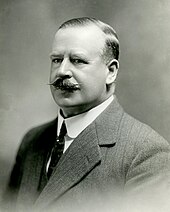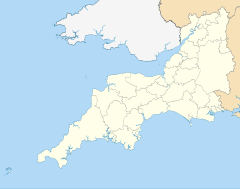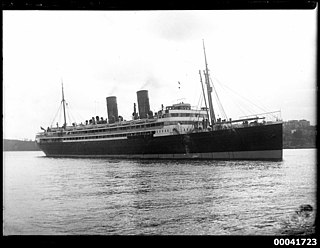
RMS Niagara was a transpacific steam ocean liner, Royal Mail Ship and refrigerated cargo ship. She was launched in 1912 in Scotland and sunk in 1940 by a mine off the coast of New Zealand.

Remuera is an affluent suburb in Auckland, New Zealand. It is located four kilometres southeast of the city centre. Remuera is characterised by many large houses, often Edwardian or mid 20th century. A prime example of a "leafy" suburb, Remuera is noted for its quiet tree lined streets. The suburb has numerous green spaces, most obvious of which is Ōhinerau / Mount Hobson – a volcanic cone with views from the top overlooking Waitematā Harbour and Rangitoto.

Miriam Bridelia Soljak was a pioneering New Zealand feminist, communist, unemployed rights activist and supporter of family planning efforts. Born in Thames, New Zealand, she was raised as a Catholic and studied to be a teacher. From 1898 to 1912, she taught in native schools, learning about Māori culture and becoming fluent in the language. In 1908, she married Peter Soljak, an immigrant from Dalmatia, now part of Croatia, but at the time part of the Austrian Empire. In 1919, because of war legislation, she was denaturalised and forced to register as an enemy alien, because of her marriage. Despite their divorce in 1939, Soljak was unable to recover her British nationality.

The Dunedin (1876–90) was the first ship to successfully transport a full cargo of refrigerated meat from New Zealand to England. In this capacity, it provided the impetus to develop the capacity of New Zealand as a major provider of agricultural exports, notwithstanding its remoteness from most markets. Dunedin disappeared at sea in 1890, and neither the ship nor her crew has ever been seen or heard from since.
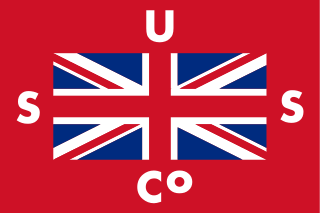
Union Steam Ship Company of New Zealand Limited was once the biggest shipping line in the southern hemisphere and New Zealand's largest private-sector employer. It was incorporated by James Mills in Dunedin in 1875 with the backing of a Scottish shipbuilder, Peter Denny. Bought by shipping giant P&O around the time of World War I it was sold in 1972 to an Australasian consortium and closed at the end of the twentieth century.

The New Zealand Shipping Company (NZSC) was a shipping company whose ships ran passenger and cargo services between Great Britain and New Zealand between 1873 and 1973.
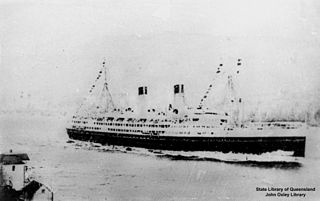
MV Aorangi was a transpacific ocean liner and refrigerated cargo ship. She was launched in 1924 in Scotland and scrapped in 1953. Her regular route was between Sydney and Vancouver via Auckland, Suva and Honolulu.

TSS Arahura was a twin screw steam passenger/cargo ship built for the Union Steam Ship Company. It was launched on the Clyde on 25 March 1905 and built by William Denny and Brothers Dumbarton at a cost of £52,000. It had a gross weight of 1,607 tons. The ship had accommodation for 201 passengers.

SS Themistocles was a UK steam ocean liner and refrigerated cargo ship. She was launched in 1910 in Ireland and scrapped in 1947 in Scotland. She was built for Aberdeen Line, White Star Line managed her for a few years, and she spent the latter part of her career with Shaw, Savill & Albion Line.
The Glen Massey Line was a private railway of 10.6 km near Ngāruawāhia in the Waikato region of New Zealand, built to serve coal mines, and, from 1935, run by the New Zealand Railways Department. The line had grades of 1 in 40, sharp curves - sharpest 6 ch and 40 of less than 10 ch - and 22 bridges, including a 91.5-metre-long and 18.3-metre-high timber trestle bridge over Firewood Creek halfway between Ngāruawāhia and Glen Massey and a 70-foot-long (21 m) bridge, adapted in 1917 to take sheep, on 52 ft (16 m) piles over the Waipā River, as well as the railway, after collapse of the road bridge.

The Northern Steam Ship Company Ltd (NSS) served the northern half of the North Island of New Zealand from 1881 to 1974. Its headquarters, the Northern Steam Ship Company Building, remains in use on Quay St, Auckland as a bar.

Jas J Niven & Co Limited later Niven Engineering, was a New Zealand engineering business based in Wellington with operations throughout the country. The foundry that became Niven's business was established in Napier in 1866.
SS Ruahine was a UK-built ocean liner and refrigerated cargo ship. She was launched in 1909 in Scotland for the New Zealand Shipping Company, who operated her in scheduled service between Britain and New Zealand. She survived both World wars.

SS Miowera was a passenger and refrigerated cargo liner that was launched in 1892 in England for Australian owners, and was later owned by two of New Zealand's foremost shipping companies. In 1908 her last owners renamed her Maitai. She was wrecked on a reef in the Cook Islands in 1916.
Ruth Atkinson was a New Zealand activist who was involved in the Temperance movement and women's rights movement. From 1910 until her death was the president of the Women's Christian Temperance Union of New Zealand branch in Nelson. In 1919, she was chosen by the organization to participate in the Inter-Allied Women's Conference, a parallel conference to the 1919 Paris Peace Conference.

SS Hilonian was a general passenger and cargo steamer, built as the Triumph in 1880 at Middlesbrough for McIntyre & Co, and later fitted with refrigeration equipment and leased to Shaw Savill and the New Zealand Shipping Company. She sank and ran aground many times, the final sinking being by torpedo in 1917.

SS Otaki was a New Zealand Shipping Company refrigerated cargo steamship that was built in Scotland in 1908 and sunk by a German merchant raider in 1917.

RMS Orama was a British steam ocean liner and Royal Mail Ship. She was launched in 1911 for the Orient Steam Navigation Company. When new, she was the largest liner sailing between Great Britain and Australia.

Cora Beattie Roberton, was a decorated New Zealand nurse who ran several Allied hospitals in the United Kingdom during the First World War. In time, she was appointed matron to every major hospital for injured New Zealand soldiers in England.


